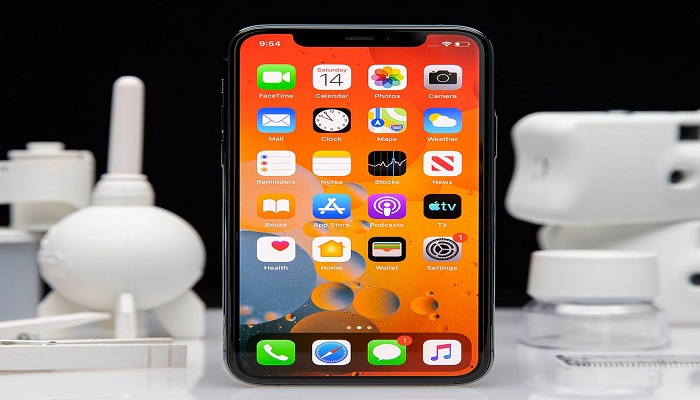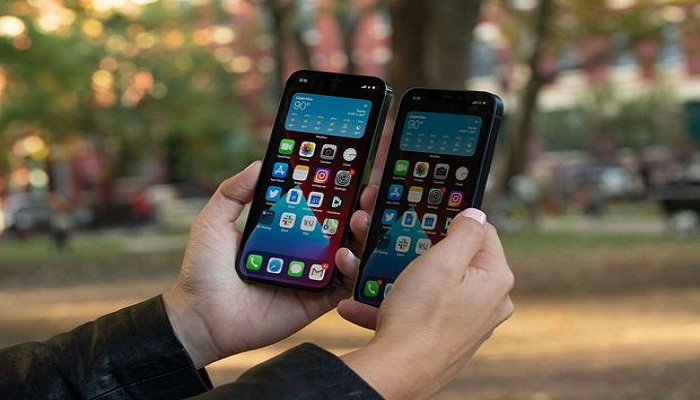There are plenty of notable differences between last year’s and this year’s iPhones. Wireless speeds aren’t necessarily one of them.
For 2020’s iPhone 12 line, the biggest feature wasn’t improved cameras or the ceramic glass covering on the screen. It was 5G. The new wireless standard took center stage at Apple’s big event in October, complete with the tech giant bringing out Verizon CEO Hans Vestberg to announce that America’s largest wireless carrier was turning on its nationwide 5G network the same day as Apple’s event.
As the holidays rapidly approach and carriers continue to get aggressive on promotions for the latest iPhones, we took a look at how AT&T, T-Mobile and Verizon’s 4G LTE and 5G networks performed on an unlocked iPhone 11 Pro Max and an unlocked iPhone 12 Pro Max. The result? Having 5G did make for some improvements right now, but they weren’t as big as you might think. The wait for real 5G upgrades continues.
In testing around New York City and Northern New Jersey, I found myself primarily connecting to the 5G low-band networks rolled out by Verizon, AT&T and T-Mobile.
One of the three flavors of 5G, low-band offers speeds that are roughly similar to a good 4G LTE connection but with improved coverage indoors and outside. This is also the most widely available version of 5G across all three US carriers nationwide.
Midband 5G, which T-Mobile has been most aggressive in deploying, doesn’t have the same range as low-band but has much faster speeds and can still work indoors. For its midband network, which T-Mobile expects to cover 200 million people by the end of 2021, the carrier has touted average speeds ranging from 300Mbps to peaks of 1Gbps. A Federal Communications Commission auction is currently underway for more midband spectrum, with AT&T and Verizon both expected to be active bidders.

On the highest frequency is millimeter-wave, the flavor of 5G most favored by Verizon which has the fastest speeds (often well above 1Gbps) but has a range that struggles to reach beyond a few city blocks, can easily be impeded by trees and leaves and can’t penetrate into buildings.
Out of all three flavors, low-band is the least exciting right now because it is so close to what people have already grown accustomed to with 4G.
In New York City, that meant some surprisingly solid 5G speeds on AT&T, with indoor download speeds in my apartment often around or topping 100Mbps, with uploads hovering at 17Mbps. Latency, or the responsiveness of the network, was high with a ping of roughly 50 milliseconds, which means that it isn’t a full replacement from home broadband. Even over Wi-Fi, my Spectrum connection comes in well under 10 milliseconds.
That said, HD FaceTime calls looked and sounded fine. YouTube loaded quickly as well, though in 25 minutes it was only able to download 18% of a high-quality version of Avengers Endgame on Disney Plus.
Despite the 4G LTE connection (or what AT&T calls “5G E”) having lower latency, Speed tests on the iPhone 11 Pro Max showed download speeds in nearly the same location in my apartment that were between 70 and 90Mbps, slower but not that far from what I was seeing with 5G. YouTube was a bit slower to initially load but still played fairly quickly.
T-Mobile’s 5G had better latency but, in my apartment, I seemed to be limited to its low-band network. While this gave me download speeds between 50 and 80Mbps (and uploads around 15 to 19Mbps), it is a far cry from the midband 5G speeds the company has been touting around the country. The carrier has, however, been making improvements, as a friend in Queens tells me the T-Mobile 5G connection on his iPhone 12 was getting download speeds of 226.46Mbps.
T-Mobile‘s 4G LTE in my apartment was nearly identical, if not at times slightly faster, to the 5G service though latency was a bit higher.
YouTube videos didn’t play quite as fast as it did with AT&T’s 5G, but it still was fairly quick. After nearly 25 minutes, the download of Endgame, however, was at just 5%.
Verizon’s low-band 5G offered the best upload speeds, often between 25 and 35Mbps, while download speeds ranged between 70 and 80Mbps. YouTube was quickest to load on Verizon’s 5G network but the Endgame download was at only 2% after 25 minutes.
On Verizon’s 4G LTE on the iPhone 11 Pro Max the download speed was around 75Mbps, with upload speeds hovering around 30Mbps.
Earlier in the summer, when connected to Verizon’s speedier millimeter-wave 5G network (what it calls Ultra Wideband), I was able to download the 7.7GB high-quality copy of Endgame to a Samsung Galaxy S20 Plus 5G in under 10 minutes. Verizon’s millimeter-wave footprint is the largest in the country, with the carrier now in 61 cities, though even in New York this is still limited to just a handful of city blocks.
AT&T and T-Mobile each have deployed millimeter-wave in a variety of cities as well, but like Verizon, their respective higher frequency networks are generally only available outdoors and in certain parts of certain cities.
As with 4G networks, the 5G experience you find will vary greatly depending on where you live. If you’re in an area where your carrier has recently done work you should see nice improvements, even on 4G. If not, well, the device likely won’t matter just yet.
My tests in a northern New Jersey suburb 20 minutes outside of New York City were an example of this.
T-Mobile which has been very aggressive with its network upgrades since completing its merger with Sprint earlier this year had the fastest 4G LTE and 5G connections, with 4G and 5G download speeds ranging between 82 and 105Mbps. While there were no major differences between the two types of networks (though latency was a bit better over 5G), the city I was in likely benefited from the upgrades that T-Mobile has been doing in the neighboring towns to add its faster midband 5G.
Verizon’s low-band 5G network, which shares airwaves with its 4G LTE service through a technology called Dynamic Spectrum Sharing (DSS), saw 5G download speeds between 27 and 49Mbps (with uploads around 1Mbps) on the 12 Pro Max. The 4G LTE experience wasn’t much different on the iPhone 11 Pro Max, but download speeds did at least top 50 Mbps (with lows in the 30s) and upload speeds came in between 4 and 5Mbps.

The nature of DSS is that it devotes more network resources depending on what’s needed in the area. Given that there are a lot more 4G devices in use right now, it is getting the priority of resources which results in an unexciting 5G network.
This will assuredly change as people upgrade to new devices, but for right now it means an experience that isn’t radically different.
AT&T’s 4G LTE connection on the 11 Pro Max was in nearly the same ballpark as Verizon’s 4G LTE, with download speeds generally between 30 and 35Mbps. The carrier’s low-band 5G was slightly stronger, but only moved the needle up to around 40 to 46Mbps, not a major improvement but in line with what a low-band 5G network would offer. Upload speeds over AT&T‘s 4G were a bit better than Verizon’s, coming in between 2.3 and 4.2Mbps.
Over time all of these numbers should only improve as networks get stronger and more people migrate to 5G devices. Network upgrades across the major carriers are ongoing, which should help today’s 5G phones see better performance over the coming weeks, months and years.
With people holding onto phones for years at a time, it is worth keeping that idea plus all the other improvements Apple made in mind when choosing between an iPhone 11 or iPhone 12 today.
That said, for many people getting on a 5G network right now won’t be a transformational experience. There are plenty of reasons to buy an iPhone 12, but unless you’re in the right location, 5G isn’t one of them yet.
Courtesy :cnet



